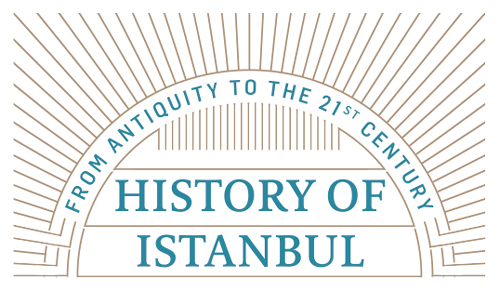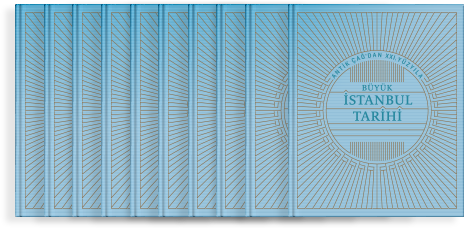Introduction
In Byzantium, common activities and self-evident facts of everyday life were normally not written down but transmitted by oral tradition from generation to generation and learned by practice. Thus, instructions for baking bread, making gruel, boiling an egg, stewing cabbage, and similar activities were not written down. In a society in which literacy is not a given, written texts only make sense if a majority of the target audience is able to read them; this would not have applied to people interested in recipes.
Consequently, Byzantine written sources about eating and drinking, cuisine, and recipes are rare. Apart from highly specialized medical texts, food was normally not a topic in Byzantine literature. Much information comes from dietetic treatises, monastic documents, and Lenten regulations, and especially from four socially critical poems allegedly written in the 12th century by Ptochoprodromos, the so-called Beggar Prodromos, though these were not popular literature but written to amuse the emperor and his court. Also helpful are letters and hagiographical texts, as well as historians’ and chronographers’ references to food in the context of famines resulting from climatic catastrophes or wars.
The scarcity of written information is in part compensated for by evidence from household archaeology and by documents from other cultures that were geographically or chronologically near to Byzantium. Latin sources are helpful, for example Anthimus’s Letter on the Observance of Food, dated before 534, and two reports by Liutprand of Cremona, who visited Constantinople in 949/950 and in 968. Also useful are Arab and early Ottoman sources, because according to the Qur’an (Sura 6.145) only carrion, flowing blood, and pig meat was forbidden, and therefore many basic foodstuffs probably were identical. Thanks to surviving recipes, medieval Arab cuisine is well known, but as these dishes are mainly based on the tastes of the upper class of Baghdad and the agricultural products of Mesopotamia, many of them do not correspond to the cuisine of the central regions of medieval Byzantium, namely Asia Minor and the Balkan peninsula. Additional information is provided by early Ottoman sources, for example Evliya Çelebi’s travelogues and recipes from the sultan’s court, though these also do not reflect the everyday life of masses.
A significant leveling of nutrition in Byzantium resulted from the detailed religious prescriptions for Lent, for which a large variety of prohibitions lasted at least 160 days. In principle, Lent had to be observed by all Christians, but it was probably observed more strictly in the monasteries; these were also subject to additional Lenten days, which differed from one religious community to the next. Lenten rules excluded meat and reduced the consumption of fish, cheese, and oil. During Lent it was generally recommended to eat little and late in the day.
Researchers differ on the normal number of daily meals; some believe that it was three meals and others two. Michael Psellos is clear on this in his short poem “On Moderation” (poem 15):
Eat breakfast [ariston] without filling
and dinner [deipnon] restricted to non-dining!
Take only a little of all vegetables and pulses,
avoid any excess in fruits!
Cabbage and short rations are in order!
Most monasteries allowed two meals a day, though some provided only one. In a few monasteries during non-Lenten periods, food was even served three times a day—including on Mondays, which normally were days of fasting in monasteries; and they ate not only vegetables and pulses, but also, depending on the season, oysters and mussels, for example in the convent of Pantocrator in Constantinople.
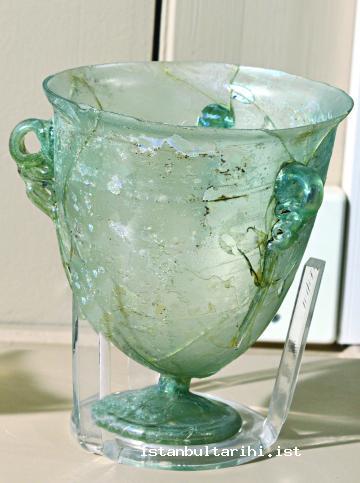
In conclusion, the number of meals was normally two. The first was the ariston, also called geuma. It was usually eaten at the sixth hour of the day (between 10 a.m. and 1 p.m.). The second, richer meal was the deipnon, served in the evening before sunset. Sometimes it was served earlier and coincided with the ariston; then it was called aristodeipnon. It is likely that for the majority of people a cooked meal (mageiria) was usually offered only once a day (often at deipnon).
Staple Foods: Bread, Gruels, and Cereals
What was the everyday food of the masses? It is impossible to give a comprehensive and specific answer for a period of one millennium, but in principle, everyday food was based primarily on cereals. In the early Byzantine period, gruel or porridge was nearly as common as bread. The gruel was called atheras and was defined as “bread (artos) boiled in pots after leavening” or as a gruel-like porridge made from ground wheat. Anthimus recommended cooking the gruel with goat’s milk, so that it had the consistency of butter. Another basic and inexpensive meal was an atheras made of semolina or bulgur (in Greek pligouri), boiled in water or in sheep’s milk, sometimes with a few drops of olive or sesame oil or another cooking fat. It could be combined with vegetables or fish. Atheras is mentioned as food especially for poor people (Patriarch Athanasius, letter 78).
The Byzantines also liked the tarhana (in Greek also trachanas), a leavened dough made from milk or yogurt, wheat grits, onions, pepper, and other spices (without tomatoes), sun-dried and ground, which is still well known today as a base for gruels and soups like tarhana çorbası; in Byzantine texts, it is described as a milky cake and was also called ameta.
In the Middle Ages, the most common food was bread. Normally, the Byzantines ate leavened bread (artos and psomion), which was distinguished from rusk (paximadion) and from unleavened bread (azymon). Bread was often eaten with olives and cheese as a main dish, and as a side dish with nearly every meal; it was also used to pick up bits of meat or to dip into sauces. Fresh bread was produced every morning, according to the Book of the Eparch (Eparchikon biblion, a manual of the governor of Constantinople), in bakeries all over town. The finest quality bread was aphraton; it was often sprinkled with sesame and eaten by preference fresh from the oven. Aphraton was more expensive than normal bread; in some monasteries, it was therefore reserved for the abbot. Cheaper bread, which the majority of the population could afford, was called mesokatharon (of middling purity), and the cheapest was called ryparos artos (dirty bread) and was made of bran or barley.
As already mentioned, bread was elementary at every meal. At the end of the 11th century, to give just one example, Michael Attaliates (in Diataxis) instructed the members of his monastic foundation to invite every day a certain number of poor people for a meal consisting of bread with meat, fish, cheese, or boiled legumes or other vegetables, “whatever God sends.”
Soups and Hot-Pots
Warm meals for the masses often consisted of soup and bread. There was a great variety of soups. The cheapest was the so-called holy soup (hagiozoumin), a nickname given by Ptochoprodromos (4.245) because only a saint would find it sufficient. In its most “holy” form, this soup was cooked with water, onions, salt, marjoram, and a small amount of oil. A more substantial soup was made from vegetables or legumes, pasta, olive oil, wine, and curd or cheese.
A variety of additional ingredients, such as big pieces of fish or meat, fresh or salted (Ptochoprodromos 1.265), could transform a simple soup into a substantial meal—no longer a soup but a hot-pot (Byzantine monokythron). Ptochoprodromos (4.204–215) described his vision of a super-monokythron, consisting of cabbage, eggs, Cretan and Wlach cheese, cream, garlic, onions, pepper, plenty of oil, and a great variety of fresh and dry and salted fish, with wine added at the end. In principle, this hot-pot can be compared with early Ottoman dishes like kefal balığı çorbası, uskumru balığı yahnisi, or papaz yahnisi, all made with fish, onions, olive oil or butter, vinegar, eggs, pepper, and other spices. (The combination of fish and cheese seems rather unusual—Ptochoprodromos was probably exaggerating.) His meat hot-pot was similar, replacing the fish with mutton and more frequently sheep’s stomach, kidneys (mesonephrin) and other organ meats, comparable perhaps to the Ottoman dishes kuzu (lamb) yahnisi or buğday çorbası, which consisted of lamb and chickpeas.
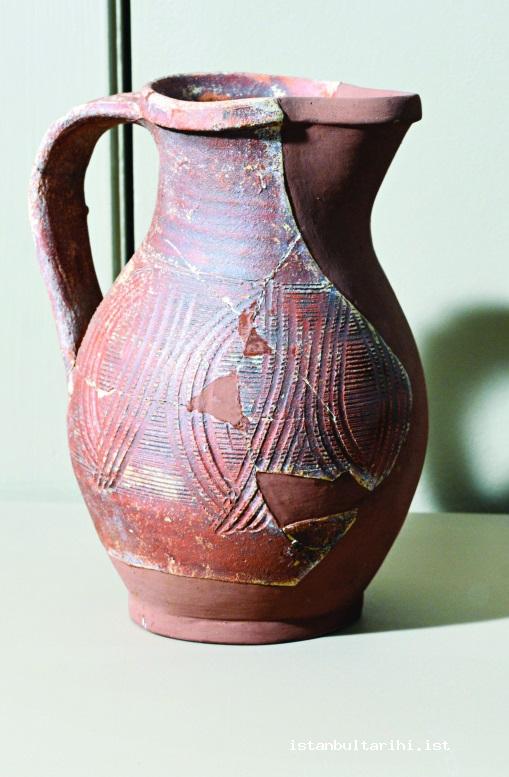
Similar to the monokythron were Arab meals with the collective name tharīd; they consisted of crumbled bread that was moistened with broth and enriched with spices (garlic or mint), yogurt, fat, and boiled meat or vegetables. Tharīd was probably also known in the pre-Islamic Levant, though it is not mentioned in Byzantine texts.
Vegetables
Most important were fresh vegetables, some of which were available throughout the year. A chapter in the agricultural manual Geoponika (c. 12.1), written in the 6th century and revised in the 10th century, offers “information on what has to be sown every month and transplanted according to the climate of Constantinople.” It describes a great variety of endive and green salads as well as other vegetables. Many of these are well known in our time, for instance dill, carrot, white cabbage, kohlrabi, cress, leek, mangold, radish, beet root, turnip, and onion. Onion may mean not only the garden onion (Allium cepa) but also the sea squill or Mediterranean bulb (Drimia maritima). The Geoponika also mentions vegetables that are less common in today’s European cuisine, for example fenugreek, Swedish turnip, mangold root, rape, orache, parsnip, hedge mustard, common rue, savory, and Jewish mallow or muluhiya (Greek molochin and Arab mulūkhīyā), which is still common in the Levant.
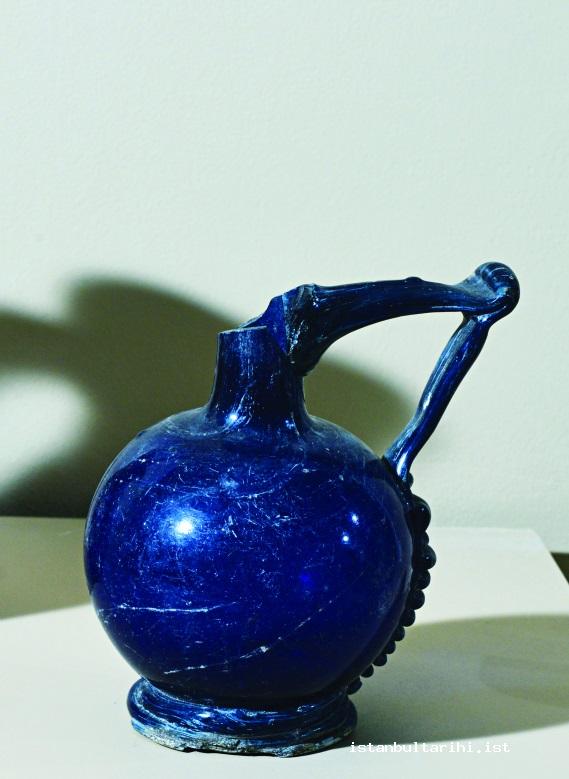
Though legumes and similar plants (chickpea, cowpea, broad bean, horsebean or lupine, and lentil) were without doubt staple foods, the abovementioned chapter of the Geoponika does not mention them, probably because they could be transported over long distances and did not necessarily have to be produced near Constantinople. Other agricultural products, including olives, aubergines, artichokes, gourds, melons, and zucchini, are not mentioned in this chapter, because the climate of Constantinople was not favorable for them. Though they were common, I have not been able to find Byzantine recipes for them; but we may substitute recipes from the early Ottoman cuisine, such as kabak kalyesi, peynirli sakız kabağı dolması, patlıcan yalancı dolması, and Halep dolması.
Spinach (Byzantine spanakin) was well known in Byzantine and Ottoman kitchens and eaten with meat, cheese, or rice, but it is not mentioned in Byzantine documents from before the 12th century. It was probably introduced to the Mediterranean region from Persia or Mesopotamia, where earlier evidence for its use exists.
Anthimus (c. 50–63) recommended vegetables and fruits strongly; he preferred mallows, beets, and leeks, and others with some reservations—lettuce only when fresh, cabbage only in winter, and melons only well ripened and seasoned with pusca (diluted vinegar) and pennyroyal. He favored turnips “boiled in salt and oil, or cooked with meat or bacon, provided that vinegar is added for flavor,” as well as boiled parsnips and carrots. Anthimus’s favorite vegetable was asparagus, both cultivated and wild, which he said may be improved with celery or fennel root and coriander or mint, and should not be boiled too long; its broth could be drunk with wine for medicinal purposes. For seasoning, Anthimus added celery, coriander, dill, and leeks to all foods. He preferred shallots to onions and recommended orache, radish, and garlic; wild garlic was considered healthier than the cultivated variety.
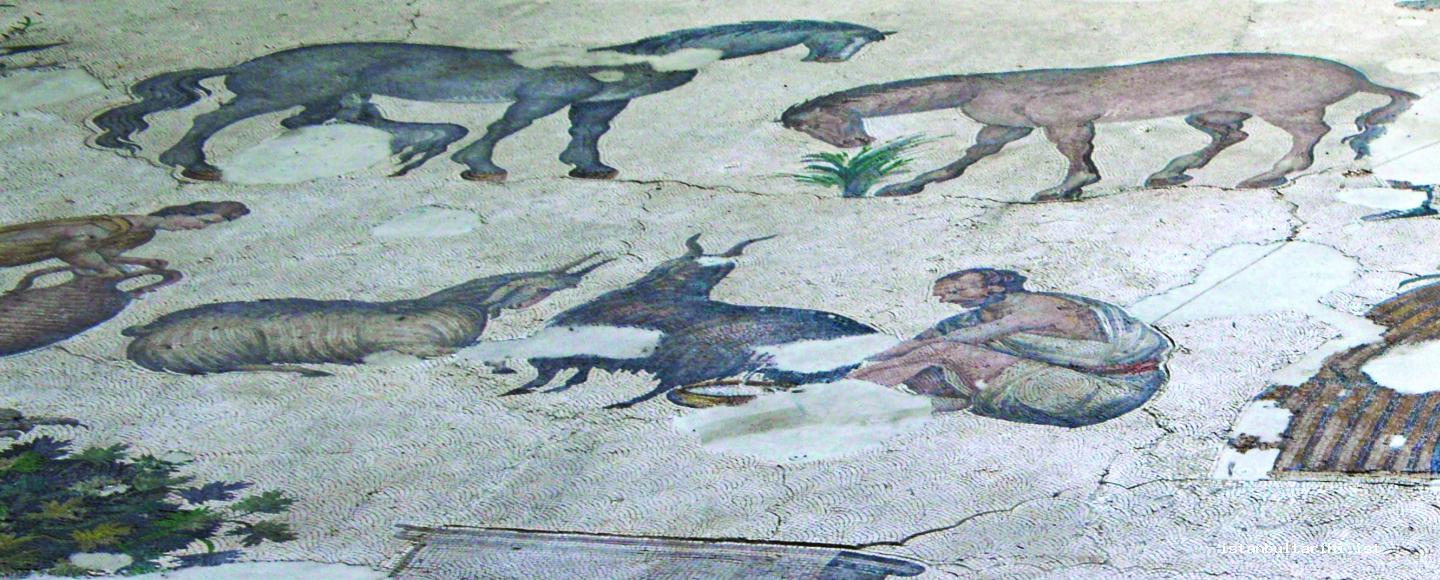
In the central regions of the Byzantine Empire the climate, for several winter months, impeded the production of fresh vegetables. Therefore vegetables were preserved in brine or vinegar for these periods. The Byzantine name of all pickled vegetables, not only those that are now called turşu (Greek toursi, from Arab ţurshu), was halmaia; a halmaia soup was sold in taverns along the streets (Niketas Choniates, History, 57l). Boiled halmaia, without oil, was eaten during Lent. One traditional recipe was pancar turşusu (beet and garlic in a brine consisting of vinegar, oil, salt, and honey).
Pulses had great importance throughout the year; they were such a common food for all social classes that Patriarch Athanasios (letter 26) nicknamed the Byzantines “bean-eaters” (kyamophagoi). Anthimus (c. 65–67, 72–74) listed broad beans (faba), chickpeas (cicer), lentils (lenticula), and lupines (lupini), which he recommended to season with oil, salt, coriander, vinegar, and sumac (rus Syriacus). The Byzantines liked a pulse meal called phaba, a cassoulet that was served as a soup in pots or more thickened in bowls; phaba is still common today in some rural and island areas in Greece. In Byzantine recipes it was mixed with pearl barley and called pasta or alfita; the Latin equivalent was polenta (Anthimus, c. 64), still a well-known term today, though now often meaning a maize porridge. It is not difficult to compare the variety of pulse meals with common recipes for soups and stews in historical Arab cuisine and in our time; for example kuru fasulye, mercimek çorbası, and nohut çorbası.
Dairy Products

Certain dairy products were rather common: oxygala (according to Columella [12.8], more similar to Persian doogh than to ayran) was sold on the streets by the oxygalatades, who carried their products in earthenware vessels on their shoulders (Ptochoprodromos, 3.176–179). Cheese was mainly made from sheep’s and goat’s milk and came from all parts of the empire. It was sold in the markets, but also by grocers (saldamarioi). Ptochoprodromos (4.109–-110) liked Wlach cheese (blachikon tyrion) and abhorred cheese from Crete. Adults usually did not drink milk. Only babies and small children were fed the creamy goat’s milk; drinking cow’s or buffalo’s milk was generally associated with foolishness and lack of culture.
Luxury Cuisine
Luxury cuisine (Greek to habrodiaiton) included, along with the most sumptuous varieties of the already mentioned monokythra, every dish consisting of fresh meat and fresh fish (fish dishes were also eaten on certain days during Lent). The 14th century biography of Eugenios of Trebizond mentions a rich man’s meal consisting of warm bread and sesame seed rolls fresh from the oven, pancakes, honey cakes, roast hare and kid, and a variety of poultry, fish, pulses, and salt meat.
Lamb, mutton, and goat’s meat were highly esteemed (Anthimus, c. 4–5); Liutprand of Cremona’s (Legatio, c. 20) critical description of an imperial present to him includes hints of a recipe: The greasy roasted billy goat was seasoned with garlic, onions, leeks, and finally the fish sauce garum. The consumption of wild boar and pork was also common; Anthimus (c. 8–10) recommended suckling pig “cooked in a sauce” or “well roasted in an oven, provided that the heat is not too great,” and he added: “It can then be dipped in a simple honey and vinegar mixture” (the Byzantine oxymeli). Fowl was also sometimes mentioned: geese, swans, and cranes (Ignatios Diakonos, ep. 14).
Salt meat was popular, in particular ham and bacon (apoktin and lardin), but it was also made from poultry, and in principle could be made from any meat (Geoponika 19.9), including, in the Levantine parts of the empire, camel meat. The biography of Symeon Salos criticized the consumption of uncooked ham or bacon (lardin) of camels, but from the context it appears that only the uncooked aspect of this dish was considered unusual.
There is no doubt about the importance of fish (ichthys, opsarion, and psarin) and seafood. The regulations for the guild of fishmongers (ichthyopratai) and other sources make it evident that fish of good quality was expensive (Book of the Eparch, c. 17;, Ptochoprodromos 3.204, 4.295–299). In Constantinople, fresh fish came from the straits and the nearby parts of the Marmara and Black Seas, but also from fish farms (ichthyotropheia) and from fishing installations in lagoons, the so-called epochai (Leo VI, novels 56, 57, 102–104). From archaeological evidence we know that in the Middle Ages, tuna several meters in length were caught in the Marmara Sea. Fish from rivers and lakes were also highly esteemed (Theophanes 357). Sun-dried, pickled, and salt fish were imported mainly from the northern shores of the Black Sea (John Tzetzes, Chilias 13). Fish and seafood of lower quality, especially caviar (the so-called salted eggs), were cheap, but even these were not always available for the poor—“caviar destroyer” (chabiarokatalytes) was a common insult.
Seasonings and Sweeteners
Many of the aforementioned meals could be served as skordata (seasoned with garlic), often with the garlic sauce tarator (Greek skordalia), which was prepared with bread crumbs. Also common was garum (Greek garon), a fish sauce, which had been popular since the Roman period (Geoponika, c. 20.46) and could be blended with vinegar (oxygaron), oil (elaiogaron), or wine (oinogaron).
Many dishes, especially salads, were seasoned with spices that were also known later, in the Ottoman kitchen. Everyday spices included salt, cumin (kimyon), cinnamon, lavender, and pepper, which was imported at high prices. Also very common were onions, spring onions, and garlic. Liquid seasonings included vinegar, the juice of bitter oranges, and verjuice, made from unripe grapes (Greek omphakion, Latin defrutum). The latter is also documented in Arab and Ottoman recipes (koruk or üzüm korouğu) and has recently become fashionable again in Europe.
Sweeteners included honey, raisins, and other sweet dried fruits. Sources often mention a sweetener called oinomeli (wine-honey), a concoction of honey and the juice from ripe grapes (Greek moustos, ancient Greek gleukos), which was preserved by the addition of gypsum (Geoponika, c. 8.26). Cane sugar (zacharis), already well known in the Arab world, was expensive and is primarily mentioned in medical texts; it probably became more common in the late Middle Ages as a consequence of its enforced production in the Levant, especially in Cyprus and Crete.
In some regions the fruit of the carob tree (Byzantine keration, xyloglykon, or charoupi, from the Arabic kharub) was used to produce a paste or a syrup. Though Byzantine literary texts mention carob pods primarily as food for animals rather than humans, they appear to have been commonly eaten at least by the poor (biography of Symeon the younger Stylite, c. 216). The consumption of carob as a food or sweetener became more common in the late period. The carob fruit is also well known today in the Levant; its paste is used in sweets and its syrup in a soft drink, the keçiboynuzu şerbeti (Arabic kharubiye).
Sweet Foods
Information about sweets in Byzantium is rare. I found only three descriptions of desserts; two of these are also well known today—the lalangia and the kollyba. Lalangia (Turkish lalanga) were pancakes baked in a pan or on a hot plate and eaten with honey (Ptochoprodromos, 4.402). Kollyba, made of boiled wheat, was a common Lenten food, often eaten in monasteries; it was (and still is in Greece) prepared as a special dish for memorial services. The Byzantines cooked it with almonds, pomegranates, walnuts, hempseeds, lentils, and raisins (Ptochoprodromos, 2.43–45), almost identical to modern recipes. Finally, Ptochoprodromos (4.324) mentioned a “delicious” Lenten rice pudding, which was prepared with honey.
Beverages
Fresh water, the most common drink, was often served warm and could be mixed or seasoned with fennel, cumin seed, aniseed (kyminothermin—Ptochoprodromos, 4.337), the already mentioned omphakion or oinomeli, fruit juices and syrups, or wine and vinegar, the latter two also mixed with honey. A great variety of eukrata (“well-mixed drinks”—Ptochoprodromos, 4.337) were available; these survived in the form of the numerous şerbets served during the Ottoman period; this applies also to the already mentioned oxygala, but not to milk.
Wine of good quality was expensive. It was preserved with resin, pitch, sulfur, or gypsum. Wine was imported to Constantinople from many parts of the Byzantine Empire, especially from the islands and from Bithynia and Thrace. It was usually mixed with warm water. To drink wine pure or to consume it in great quantities was frowned upon, though not unusual according to the written sources.
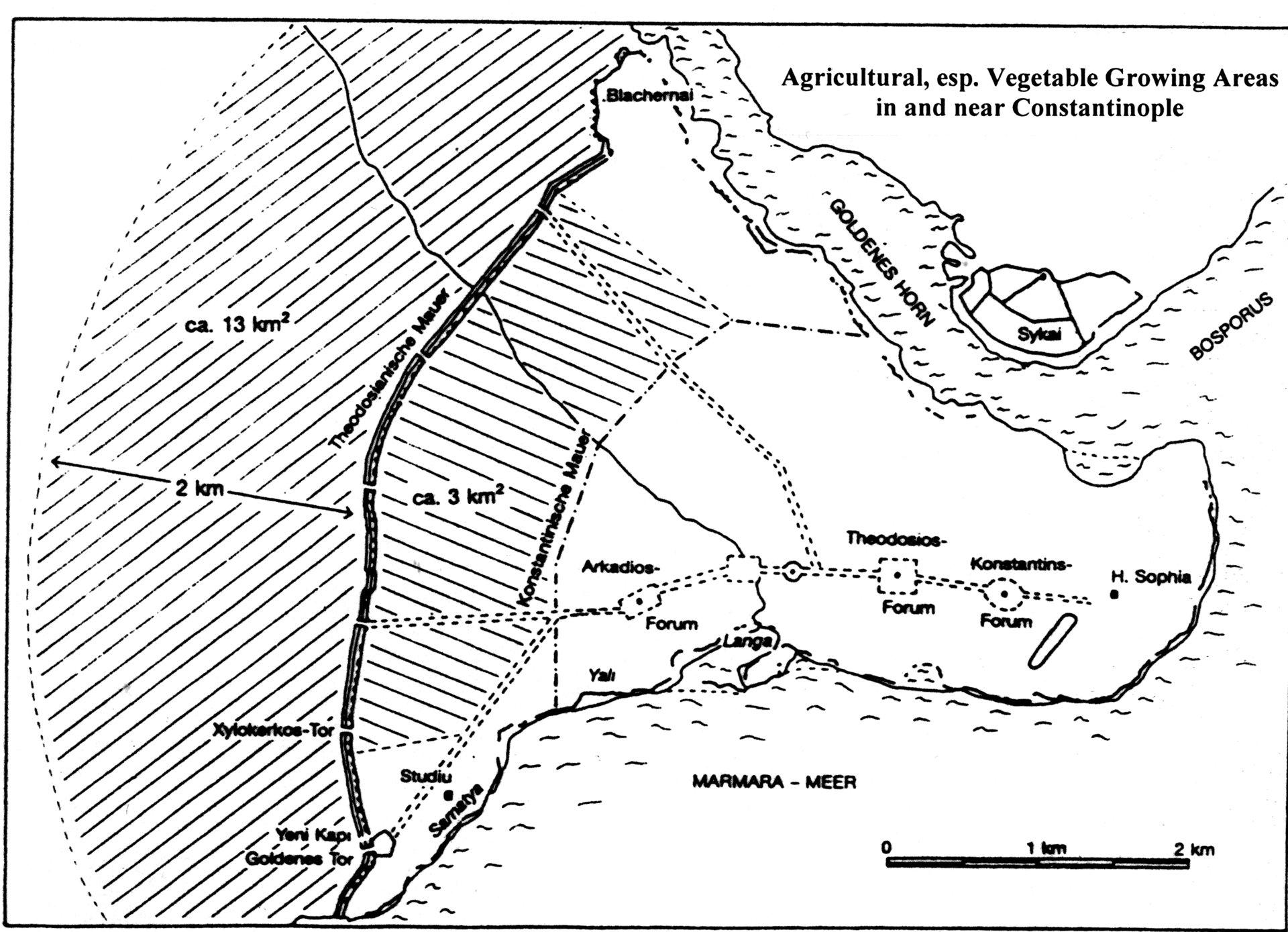
Food Logistics for a Large Town
After the plague, which afflicted Byzantium repeatedly from 541 onward, Constantinople had until 1204, almost without interruption, substantially more than 100,000 and often more than 200,000 inhabitants—a population that classified it, by medieval standards, as a large town. Therefore it was subject to special conditions of food supply and general logistics. In what quantities did the necessary goods have to be brought, from what distances, and how much time did transportation take?
For the basic supply of staple foods, one might at first glance suppose that two important population groups were special cases, namely the soldiers and the monks and nuns. But in the medieval reality their difference from “normal” Byzantines was probably minimal, because for the army, privileges regarding provisions were documented only during military expeditions, and monastic cuisine did not differ much from the everyday food of low- and moderate-income civilians.
Local and Regional Supply
Constantinople’s built-up area never covered the entire surface within the Theodosian walls. Extended areas (at least 2–3 km2) were used for agriculture, especially horticulture (Figure 1). Agricultural theories and written sources (e.g., Theophanes and Vita Euthymii) point in this direction. Nikolaos Mesarites praised horticulture and farming near Stoudiou monastery and the church of the Apostles, and Odo of Deuil, who visited Constantinople in 1147/1148, noted that one-third of the surface inside the city walls consisted of vegetable gardens.
The tradition of horticulture inside the Theodosian walls survived not only the Byzantine but also the Ottoman centuries; it existed between Yedikule and Belgrat kapı, as well as in the quarters of Samatya, Yalı, and Langa along the sea-walls into the late 20th century. In addition to the area inside Constantinople, it is likely that outside the city, along the Theodosian walls (at a length of about 6 km) at least another 10–12 km2 could be used for gardening within a distance of not more than 2–3 km from the walls, only a short distance from the inhabited parts of Constantinople. This distance of not more than 6–7 km made it possible to supply fresh greens to city markets daily.
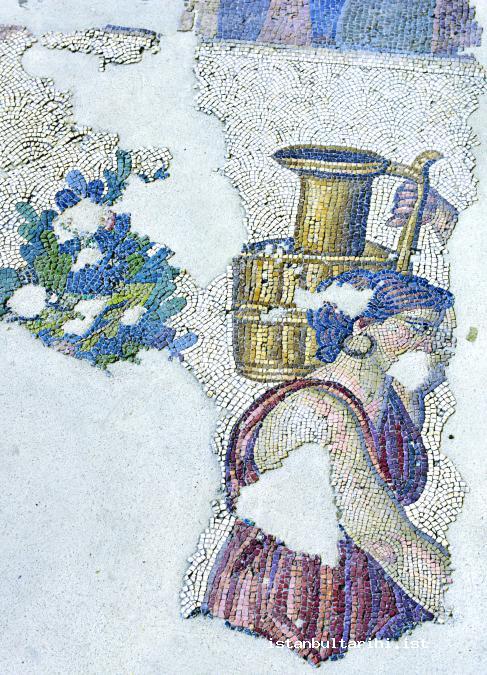
In addition to these products from inside and outside the city walls, additional agricultural products were imported by boat from the other side of the straits. From all these areas, which are strictly speaking in the hinterland of Constantinople, it was usually possible to provide fresh vegetables for the city’s inhabitants without any problems.
Long-Distance Supply
Also of vital importance for Constantinople’s inhabitants was the supply of staple foods—first of all cereals, but also olives and olive oil, pulses, preserved meats and fruits, nuts, salt, and wine—as well as firewood.
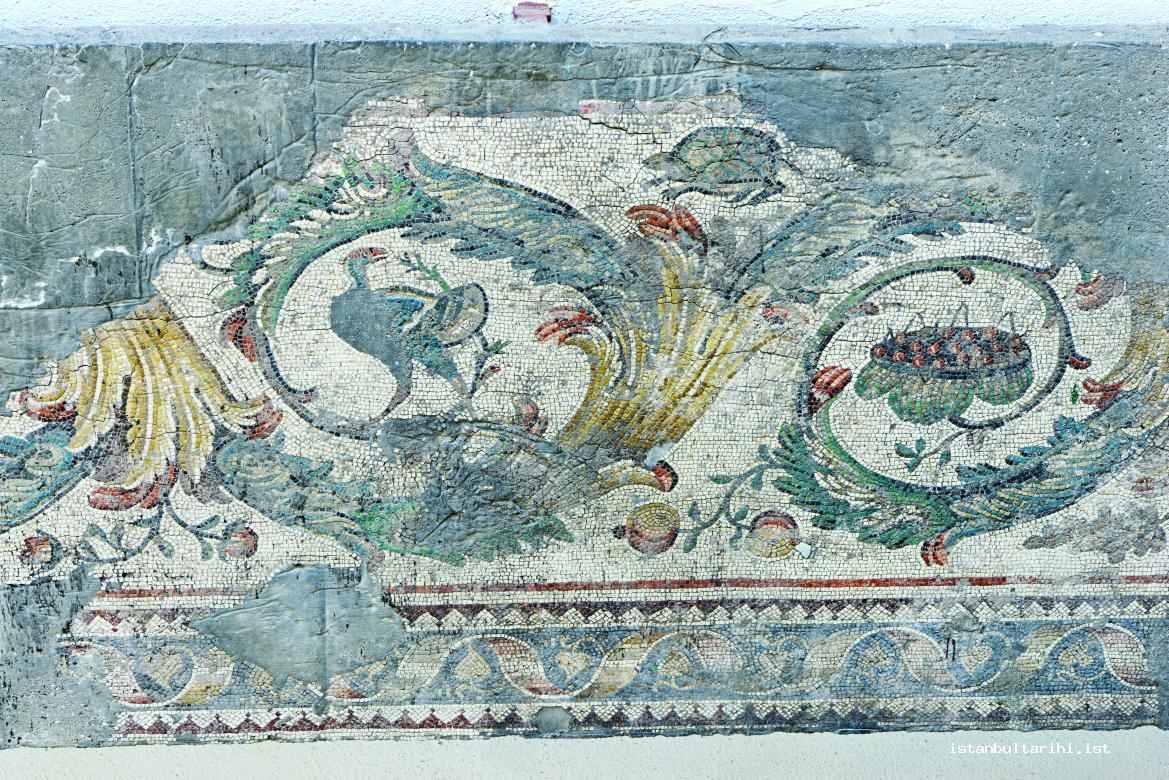
Late antique sources indicate that the annual demand for cereals for one adult was 200–300 kg (30–42 modioi). Therefore, 100,000 inhabitants would need at least 30,000 t of grain. Producing sufficient cereals for nonproductive inhabitants of the city would require roughly the same number of farmers again, because one agrarian family as a rule could not supply more than one additional family. Thus, twice that amount had to be produced (60,000 t)—in fact, more, because significant losses occurred during transportation due to robbery, theft, piracy, distress, rot, and rodents (these still caused the loss of one-third of world production in the 20th century). This amounts to a gross demand for production of at least 80,000 t. This quantity corresponds, assuming a net yield of 0.5 t/ha, to a minimum cultivation area of about 1,800 km2—which had to be doubled in the then-common two-field system, resulting in a requirement of at least 3,600 km2 for cereals alone, not counting the area needed for villages, other agricultural fields, and pastures, or barren land. These requirements would have doubled during times when Constantinople’s population reached 200,000.
The production areas for cereals and all bulk goods had to be within a reasonable distance of the nearest harbor, because for staple goods only transportation by sea was cost- and time-effective. Since the 4th century Constantinople’s cereals had come from Alexandria in Egypt. From the end of the annona in 618 until the 1070s, most grain for the capital was produced in western Asia Minor and shipped from harbors on its western coast and the Sea of Marmara. After the battle of Mantzikiert in 1071 and the Selcuk conquest, Constantinople suffered for some years from famine, but beginning with the reign of the first Komnenian emperor, Alexios I, much grain was imported from Thessaly and Macedonia, and in the late period mainly from the western Black Sea coast.
CONCLUSIONS
The staple food for the population of Constantinople consisted throughout the year of bread and dishes made from cereals, as well as olives, fresh or preserved vegetables and fruits, and salted or dry fish and caviar. Certain vegetables and fruits, as well as eggs and dairy products, were only seasonally available. The consumption of fresh fish and meat, as well as smoked meat and bacon, depended on the season, the Lenten rules, and especially on the individual’s economic situation.
If normal climatic and political conditions allowed a regular harvest, the supply of food to Constantinople worked well until the 14th century. As late as the end of the 12th century, the archbishop of Athens, Michael Choniates, could ask a high-ranking official in the capital (letter 50):
What are you short of? Are not the wheat-bearing plains of Macedonia and Thrace cultivated for you? Is not the wine from Euboea and Pteleon and Chios and Rhodos pressed for you? … Do not all streams of goods flow together at once in the imperial city like in one sea?
BIBLIOGRAPHY
Anagnostakis, Ilias, Byzantinos oinikos politismos – to paradeigma tes Bithynias, Athens: Institute of Byzantine Research, 2008.
Anagnostakis, Ilias (ed.), Flavours and Delights, Tastes and Pleasures of Ancient and Byzantine Cuisine. Texts by Andrew Dalby, Ilias Anagnostakis, Chryssi Bourbou, Johannes Koder, Maria Leontsini, Athens: Armos Publications, 2013, pp. 105-108.
Anthimus, On the Observance of Foods, English tr. Mark Grant, Totnes: Prospect Books, 1996.
Braund, David, “Fish from the Black Sea: Classical Byzantium and the Greekness of Trade”, ed. J. Wilkins, D. Harvey and M. Dobson, Food in Antiquity, Exeter: University of Exeter Press, 1996, pp. 162-170.
Chrone-Vakalopoulou, Maria and Angelos Vakalopoulos, “Fishes and other Aquatic Species in Byzantine Literature. Classification, Terminology and Scientific Names”, Byzantina Symmeikta, 2008, vol. 18, pp. 123-157.
Durliat, Jean and André Guillou, “Le tarif d’Abydos (vers 492)”, BCH, 1984, vol. 108, pp. 581-598.
Evliyā Çelebi in Albania and Adjacent Regions (Kosovo, Montenegro, Ohrid). The Relevant Sections of the Seyahatname, ed. Robert Dankoff and Robert Elsie, Leiden: Brill, 2000.
Galloway, Jock H., The Sugar Cane Industry, an Historical Geography from its Origins to 1914, Cambridge: Cambridge University Press, 1991, p. 31-48.
Günsenin, Nergis, “Ganos wine and its Circulation in the 11th Century”, Byzantine Trade, 4th - 12th Centuries. The Archaeology of Local, Regional and International Exchange. Papers of the Thirty-eighth Spring Symposium of Byzantine Studies, St John’s College, University of Oxford, March 2004, ed. by Marlia Mundell Mango, Aldershot: Ashgate Pub., 2009, pp. 145-153.
Jacoby, David, “Caviar Trading in Byzantium”, Mare et litora. Essays presented to Sergei Karpov for his 60th Birthday, ed. R. Shukurov, Moscow: Indrik, 2009, pp. 349-364.
Jacoby, David, “La production de sucre en Crète vénitienne: l’échec d’une entreprise économique”, Rhodonia. Hommage to M. I. Manoussakas, ed. Chr. Maltezou, Rethymno : 1994, pp. 167-180.
Koder, Johannes, “Fresh Vegetables for the Capital”, Constantinople and its Hinterland, ed. C. Mango and G. Dagron, Aldershot : Variorum, 1995, pp. 49-56.
Koder, Johannes, Gemüse in Byzanz. Die Frischgemüseversorgung Konstantinopels im Licht der Geoponika, Vienna: Fassbaender, 1993.
Koder, Johannes, “Maritime Trade and the Food Supply for Constantinople in the Middle Ages”, Travel in the Byzantine World, ed. R. Macrides, Aldershot: Ashgate, 2002, pp. 109-124.
Koder, Johannes, “Salz – Anmerkungen zu Wortbedeutung und Realie”, Geschehenes und Geschriebenes. Studien zu Ehren von G. S. Henrich und Kl.-P. Matschke, ed. S. Kolditz and R. C. Müller, Leipzig : Eudora-Verlag, 2005, pp. 39-49.
Koder, Johannes, “Stew and salted meat – opulent normality in the diet of every day?”, Eat, Drink, and Be Merry (Luke 12:19) - Food and Wine in Byzantium, Papers of the 37th Annual Spring Symposium of Byzantine Studies, in Honour of Professor A. A. M. Bryer, ed. L. Brubaker and K. Linardou, Aldershot : Ashgate, 2007, pp. 59-72.
Lafli, Ergün, “Archäologische Evidenzen zum Weinanbau im südwestlichen Paphlagonien in römischer und frühbyzantinischer Zeit”, Die Schätze der Erde. Natürliche Ressourcen in der antiken Welt. Stuttgarter Kolloquium zur Historischen Geographie des Altertums 10 2008, ed. E. Olshausen and V. Sauer, Stuttgart: Franz Steiner Verlag, 2012, pp. 261-279.
Kokkinou, Marigoula D. and Georgia S. Kophina, Sarakostiana. Syntages gia nestesima phageta kai glyka, Athens:1990.
Kolias, Taxiarches, “Essgewohnheiten und Verpflegung im byzantinischen Heer”, Byzantios, Festschrift für Herbert Hunger zum 70. Geburtstag, Vienna: E. Becvar, 1984, pp. 193-202.
Kroll, Henriette, Tiere im Byzantinischen Reich, Mainz : Verlag des Römisch-Germanischen Zentralmuseums, 2010.
Andreas Külzer, Andreas, Tabula Imperii Byzantini 12: Ostthrakien (Europe), Vienna : Verlag der Österreichischen Akademie der Wissenschaften, 2008.
Lehfeldt, Werner (ed.g.), with contribution by Tilman Berger et al., Eine Sprachlehre von der Hohen Pforte: ein arabisch-persisch-griechisch-serbisches Gesprächslehrbuch vom Hofe des Sultans aus dem 15. Jahrhundert als Quelle für die Geschichte der serbischen Sprache, Köln - Wien: Böhlau, 1989.
Magdalino, Paul, “The Grain Supply of Constantinople, Ninth-twelfth Centuries”, Constantinople and its Hinterland, ed. C. Mango and G. Dagron, Aldershot: Variorum, 1995, pp. 35-47.
Müller, Andreas E., “Getreide für Konstantinopel”, Jahrbuch der Österreichischen Byzantinistik, 1993, vol. 43, pp. 1-20,
Ptochoprodromos. Einführung, kritische Ausgabe, deutsche Übersetzung, Glossar, ed. Hans Eideneier, Cologne: Romiosini, 1991 (Iraklio 2012).
Rodinson, Maxime et al., Medieval Arab Cookery, Essays and Translations, Totnes: Prospect Books, 2001.
Tinnefeld, Franz H., “Zur kulinarischen Qualität byzantinischer Speisefische”, Studies in the Mediterranean World, Past and Present, 1988, vol. 11, pp. 155-176.
Weber, Thomas, “Essen und Trinken im Konstantinopel des 10. Jahrhunderts nach den Berichten Liutprands von Cremona”, Liutprand von Cremona in Konstantinopel. Untersuchungen zum griechischen Sprachschatz und zu realienkundlichen Aussagen in seinen Werken, ed. J. Koder - Th. Weber, Vienna : Verlag der Österreichischen Akademie der Wissenschaften, 1980, pp. 71-99.
Yerasimos, Marianna, Osmanlı Mutfağı, Istanbul 2002 = 500 Years of Ottoman Cuisine, tr. S. Bradbrook, Istanbul: Boyut Publishing Group, 2005.
Zaouali, Lilia, Medieval Cuisine of the Islamic World. A Concise History with 174 Recipes, Berkeley: University of California Press, 2009.
